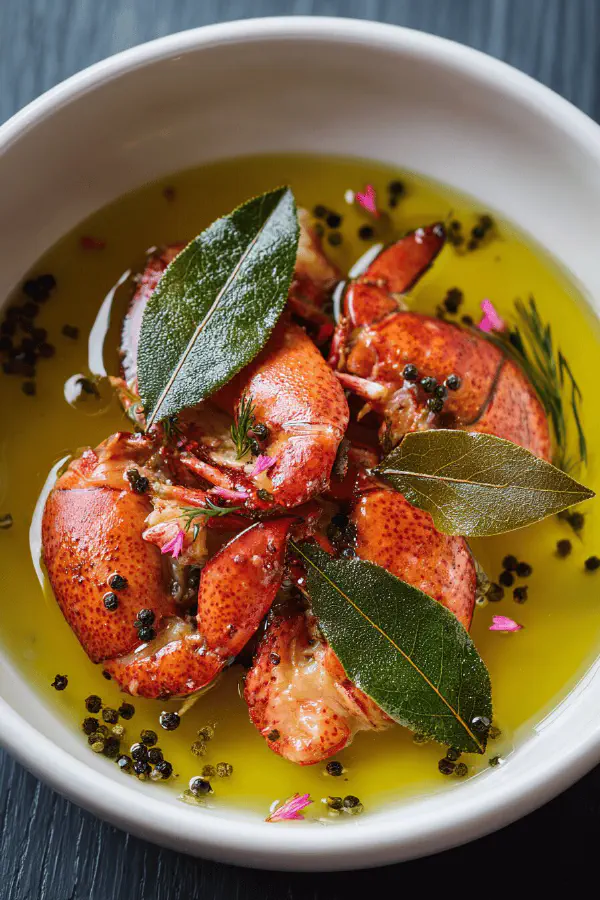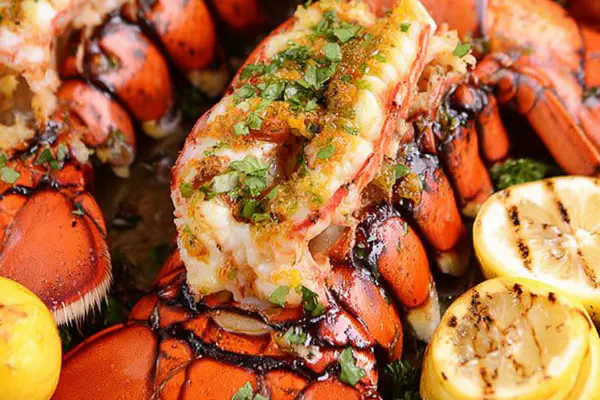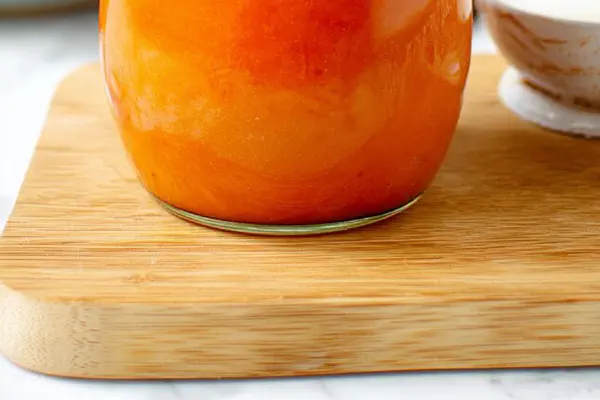Featured Recipe
Lobster Oil Twist

By Kate
"
Extract rich flavors from cooked lobster shells and legs with gently heated oil infused by whole spices. Canola oil swapped for grapeseed for a lighter finish. Black peppercorns replaced partially with crushed pink peppercorns for subtle floral notes. Slow simmer evaporates shell liquor leaving a concentrated essence. The oil filters through lined sieve catching all shells. Chill to settle then store cool or freeze up to 6 weeks. Great base for seafood dressings, sauces, or finishing oils where you want that deep crustacean umami without dairy or gluten.
"
Prep:
20 min
Cook:
30 min
Total:
50 min
Serves:
About 220 ml
seafood
sauce
infusion
lobster
culinary technique
Introduction
Lobster shells begging for something better than landfill. Take those claw bits, cracked legs, shells — culinary gold waiting to be coaxed out. Heat oil low and slow, drawing out that rare crustacean scent. Not turbo boil or you risk bitter burnt flavors. Patience — watch liquid vanish. Orange glow emerges — that’s the sign. Peppercorns crackle subtly, bay leaf adds woody perfume without stealing attention. Strain gently to keep oil clear, avoid gritty mouthfeel. Store chilled to maintain freshness. Forget complicated fancy steps — simple components, slow coaxing, precise timing. This oil a game changer, subtle base for sauces or dressings. No dairy, gluten, eggs—just pure umami extraction.
Ingredients
About the ingredients
Lobster legs and shells usually tough with lots of nooks holding flavor juices; gentle processing ensures you release maximum depth without pulverizing shells which complicates filtering. Grapeseed oil chosen for its neutral flavor and high smoke point — key to slow heat extraction. Canola workable but heavier. Black peppercorn essential, pink peppercorn adds unexpected delicate brightness — can omit if unavailable but add complex layers. Bay leaf dried, never fresh — fresh adds grassy notes unwanted here. Filter setup critical — coffee filters or multiple paper towels reduce grit, avoid oil cloudiness. Keep oily shell mix cold before cooking if possible to limit premature oxidation, help flavors meld more cleanly.
Method
Technique Tips
Pulse shells and legs in bursts — too long turns mix pasty forcing strained bits through. Orange tint signals carotenoid extraction from lobster shells — don’t rush beyond that or oil begins degrading. Simmer oil gently — audibly low bubbles, no roaring boil — monitor closely last 5 minutes, as evaporation nears final phase. Overcooking leads to burnt oil flavor; undercooking results in diluted, less fragrant oil. Post-simmer steep internal temp lowers allowing bay leaf aromatics to meld softly instead of dispersing aggressively. Pour slowly through lined sieve, don’t squeeze solids to avoid cloudiness. Cool and transfer swiftly to prevent off-flavors from exposure. Oil keeps better frozen due to fatty acid oxidation—refrigerate only if prompt use planned. This technique recycles shells smartly, yielding intense lobster essence without dairy or gluten complications.
Chef's Notes
- 💡 Use cracked lobster legs and shells; maximize flavor release without pulverizing. Keep pieces coarse to avoid clogging filters… just pulse gently. Monitor oil color; warm orange means flavor extraction is happening. Crushed pink pepper adds floral notes; skip if unavailable but consider something similar.
- 💡 Simmer slowly; listen for those soft bubbles. Loud boiling? Not good. Aim for a gentle whisper. Black pepper essential for heat; watch aroma deepen as oil warms. Use a heavy pan to maintain even heat. Don't rush this stage; patience pays off in flavor.
- 💡 Strain carefully, avoid pressing bits through. Let gravity do its thing — it keeps oil clear. Line your sieve well. Using multiple layers works best. Chill mixture before cooking helps prevent early oxidation; mixing flavors later will yield a cleaner oil. Reduce exposure to oxygen.
- 💡 Store oil chilled or frozen; refrigerate only if you’ll use it within four weeks. Freezing is smart - preserves flavor longer. If oil starts smelling off, pitch it. Avoid extra virgin olive oil; its intense flavoring distracts from delicate lobster notes. Use lighter oils instead.
Kitchen Wisdom
How can I tell if the oil is ready?
Look for thin surface bubbles; it means the shells’ juices are evaporating. Aroma shifts to marine and toasted… those are the signs of doneness. Avoid boiling aggressively, or risk burning.
What can I use instead of grapeseed oil?
Light olive oil or sunflower oil will work; just avoid extra virgin olive oil. It overpowers delicate flavors of lobster. If you have it, stick to something neutral.
What to do if oil smells rancid?
First, get rid of it. Rancidity means oxidation has occurred, usually from heat or exposure. Best to use fresh oil. Check storage methods too. Keep cool and sealed.
How long can I store the oil?
Refrigerate for four weeks; freezers keep it up to six weeks. Seal tightly. Don’t let it sit out. Label your containers for quick access. Track how long it’s been.



